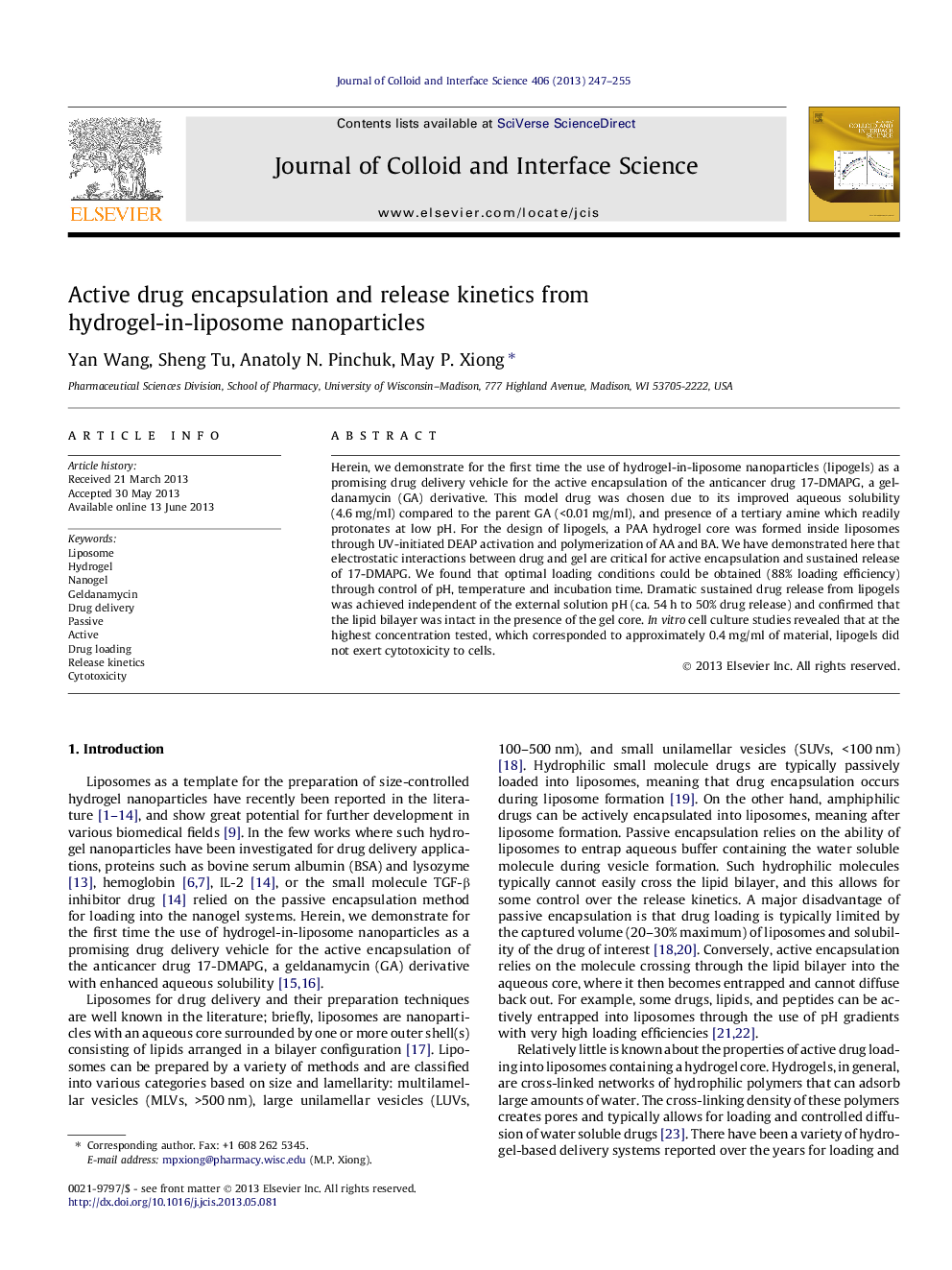| Article ID | Journal | Published Year | Pages | File Type |
|---|---|---|---|---|
| 607622 | Journal of Colloid and Interface Science | 2013 | 9 Pages |
•Hydrogel-in-liposomes (lipogels) were prepared by UV irradiation.•The model drug used was 17-DMAPG, a geldanamycin derivative.•Passive and active drug loading, and release properties were characterized.•The in vitro cytotoxicity of the nanoparticles and materials were investigated.
Herein, we demonstrate for the first time the use of hydrogel-in-liposome nanoparticles (lipogels) as a promising drug delivery vehicle for the active encapsulation of the anticancer drug 17-DMAPG, a geldanamycin (GA) derivative. This model drug was chosen due to its improved aqueous solubility (4.6 mg/ml) compared to the parent GA (<0.01 mg/ml), and presence of a tertiary amine which readily protonates at low pH. For the design of lipogels, a PAA hydrogel core was formed inside liposomes through UV-initiated DEAP activation and polymerization of AA and BA. We have demonstrated here that electrostatic interactions between drug and gel are critical for active encapsulation and sustained release of 17-DMAPG. We found that optimal loading conditions could be obtained (88% loading efficiency) through control of pH, temperature and incubation time. Dramatic sustained drug release from lipogels was achieved independent of the external solution pH (ca. 54 h to 50% drug release) and confirmed that the lipid bilayer was intact in the presence of the gel core. In vitro cell culture studies revealed that at the highest concentration tested, which corresponded to approximately 0.4 mg/ml of material, lipogels did not exert cytotoxicity to cells.
Graphical abstractFigure optionsDownload full-size imageDownload high-quality image (130 K)Download as PowerPoint slide
